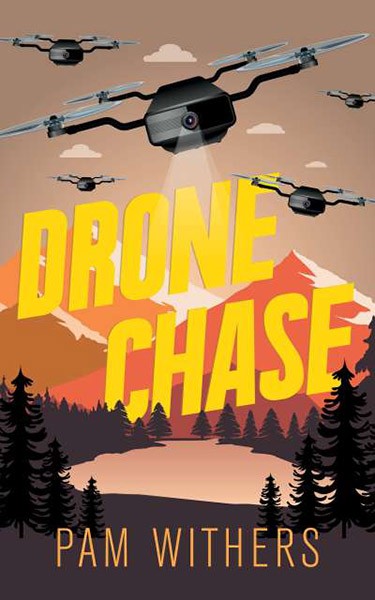
Drone Chase
Click here to learn about the story behind the book!
This story sprang above all from place: the Great Bear Rainforest – “a global treasure that covers 6.4 million hectares (24,711 square miles) on British Columbia’s north and central coast – equivalent in size to Ireland,” according to greatbearrainforest.gov.bc.ca.
I always wanted to visit it, and what better excuse than needing to research a novel set in it? Of course, to have teens pursue a bear-poaching gang, I needed to read a lot about bear poaching, done primarily for selling the bile (a fluid that made and released by the liver and stored in the gallbladder) on the black market. Unfortunately, some people believe the myth that bear bile cures almost any ailment, which has spawned “bear bile farms,” especially in Asian countries. Reading articles about poaching and bile-bear farms was extraordinarily difficult, literally nauseating, but essential to making my novel authentic.
Is there poaching in BC? In 2017, National Geographic reported, “The fight to protect the bears of the Great Bear Rainforest is [not] over. There are still too few wildlife officers to enforce hunting regulations, which means much of the work will continue to fall to the Coastal Guardian Watchmen, a network of First Nations people who monitor, patrol, and enforce indigenous laws in parts of the Great Bear Rainforest that are too remote for federal or provincial officers to reach regularly.”
When I visited Bella Coola to research my novel, and to hike, explore, watch grizzly bears, and speak at two local schools, I was totally taken by this stunningly beautiful region. It’s high on my list to return, and I’m sharing some photographs of my visit below.
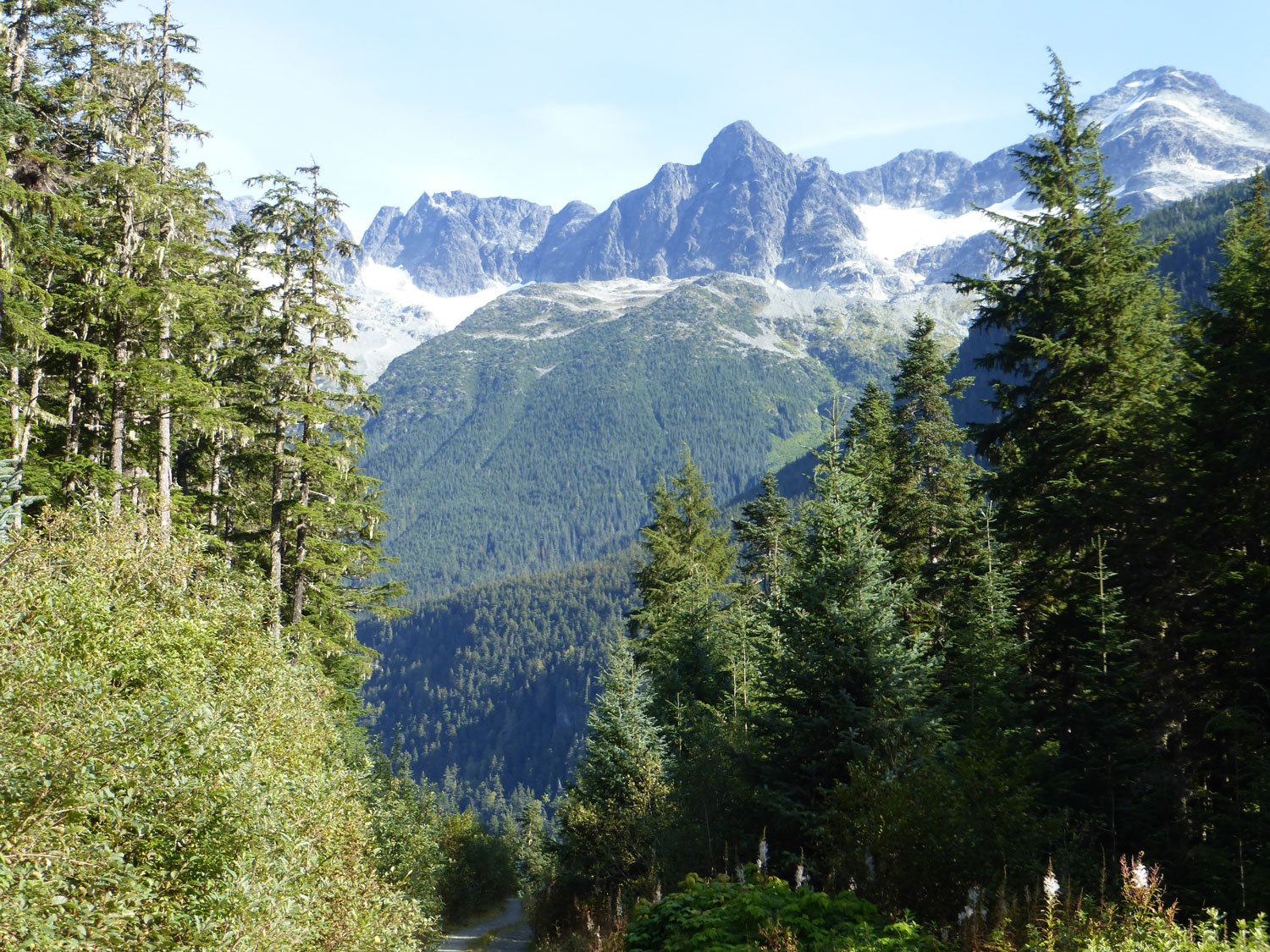
One of the most beautiful places in the world: Bella Coola Valley.
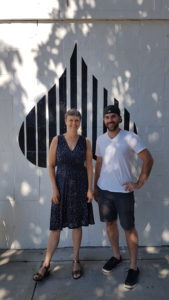
Meeting with my drone consultant, Rob Brooks, a Vancouver-based sales and marketing professional.
As for the drones my characters used, my main consultant on this book was Rob Brooks, a Vancouver-based sales and marketing professional who owns and operates Altair UAV (www.altairuav.com). He was more than patient in helping me develop plot scenes, in explaining technical aspects, and in reading my first drafts, even contributing his own writing in places. I also had advice from droner Brian McLellan of Mayne Island, B.C.
Meanwhile, Bella Coola’s B.C. Parks Ranger Steve Hodgson confirmed that Bent Ear, Lady Diver, Y-Bear, and Rowdy Twins (referred to in the novel) are actual bears in the Great Bear Rainforest.
My character Ray is the son of two veterinarians. Mayne Island, B.C. veterinarian Elisabeth Jahren not only “vetted” all sections connected with animal-care scenes, but because she is married to a fellow vet, with kids who all but grew up in vet clinics, she says she can relate to Ray and his parents.
To ensure that Mr. Kim’s dialogue was authentic, I ran portions of the manuscript past Ann Y.K. Choi (https://annykchoi.com/), a Toronto-based author and educator originally from South Korea. She read Mr. Kim’s dialogue aloud to her family, which prompted some corrections and discussion, then translated his words into Korean and had a Canadian-Korean friend translate them back to English. How overwhelmingly grateful I am for her above-and-beyond feedback! More on that here: https://pamwithers.com/fiction-political-correctness/
It was in Doug Peacock’s Grizzly Years that I read about a bear blowing and popping bubbles in a mud hole.
In Great Bear Wild: Dispatches from a Northern Rainforest by Ian McAllister and Robert Kennedy Jr., I came across the phrase “ursine daycare” (cubs waiting in trees for their moms to finish catching salmon or collecting berries).
The phrase “Skinned, a bear looks eerily human,” comes from Kevin Van Tighem in Bears Without Fear.
The reference to bear gallbladders being sold in velvet-lined boxes comes from Ben Kavoussi in a March 24, 2011 article at Sciencebasedmedicine.org.
Special hugs to Deb Rowe, who accompanied me to Bella Coola.
And finally, thanks to my teen editor Vansh Bali.
Organizations that work against bear poaching and bile-bear farming or deal with bear conservation in general include World Animal Protection, the Humane Society, Animals Asia Foundation, Justice for BC Grizzlies, and Pacific Wild.
While in Bella Coola while researching this story, I spoke at Bella Coola Elementary School, where a student named Rayland told me his great-grandfather cared for an abandoned cub till it was ready to go back to the wild. I really appreciated Rayland coming forward like that, and imagine my delight when his father, Hank Bill, was willing to spend time filling me in on details of the cub brought home by his grandfather. Hank clearly remembers bottle-feeding and play-wrestling with the cub as a child:
This was thirty to thirty-five years ago, in the 1980s. Growing up, my grandpa lived on Gang Ranch near Williams Lake, B.C. I was raised off the land. My grandpa lived in the old ways, cowboying and buffalo herding. He owned the largest buffalo herd.
One day Grandpa found an abandoned cub and brought it home. He was still nursing, so they made him a baby bottle. I was curious. He was timid at first. He looked a little scared. I took my time getting to know him. I’d give him his bottle when I was allowed. After he was too old for the bottle, Grandpa fed him fish and buffalo and deer meat.
I used to play with him while growing up. Me and the bear played. He was way stronger. Sometimes he pushed me and I went flying. But he never hurt me or attacked me. I’d tap him and run, and he’d chase. I’d wrestle with him. He’d grab me and throw me around. We didn’t really cuddle. He liked to go by the fireplace.
The cub stayed in our backyard. He wasn’t fenced or tied up or anything. He could come and go as he pleased. I followed if he went on a walk. He’d go to the creek and play and chase bugs, pretty much did whatever bears do. He’d make normal bear sounds: mmmm, rrrr, umhhh. He’d do his growl.
When the cub was old enough and off the bottle, he left every time the other bears went fishing. But he’d come back to Grandpa’s every summer. Grandpa raised him till he was big enough to return to the mountains. The cub was two or three when we let him loose.
Some closing quotes:
“The Kitasoo/Xai’Xais are ramping up their Coastal Guardian Watchmen presence to deter poachers in the waning days of the grizzly hunt, but their efforts alone cost some $210,000 a year—a fraction of the funds activists say the network needs.”
“Before Europeans arrived in North America, a vast network of grizzly bear trails existed between California and Alaska. Today, the southern extent of the grizzly’s coastal range has been lost to logging and urbanization while hunting extirpated the bears themselves long ago. Today, only a few isolated habitats are occupied by grizzlies below the 49th parallel. This is one reason why the Great Bear Rainforest is critically important – it acts as a stronghold for the southern range of North America’s coastal grizzly bear population, supporting Canada’s largest and densest concentrations of grizzlies.” — https://www.raincoast.org/projects/grizzly-bears/
“The historic agreement that secures the future of the Great Bear Rainforest means more old- and second-growth forest will be protected, while still ensuring opportunities for economic development and jobs for local First Nations.” — greatbearrainforest.gov.bc.ca
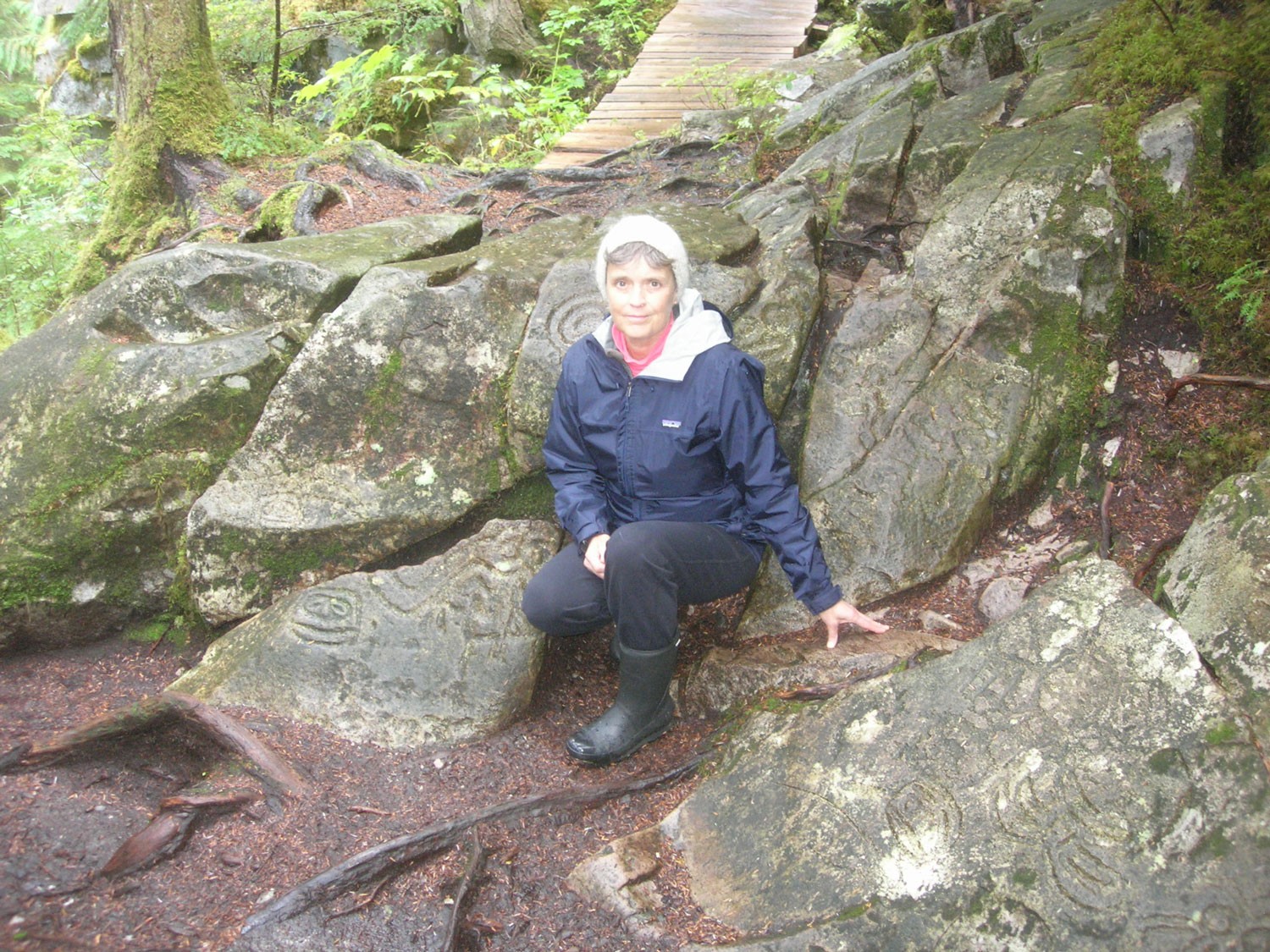
Ancient rock pictographs near Bella Coola.
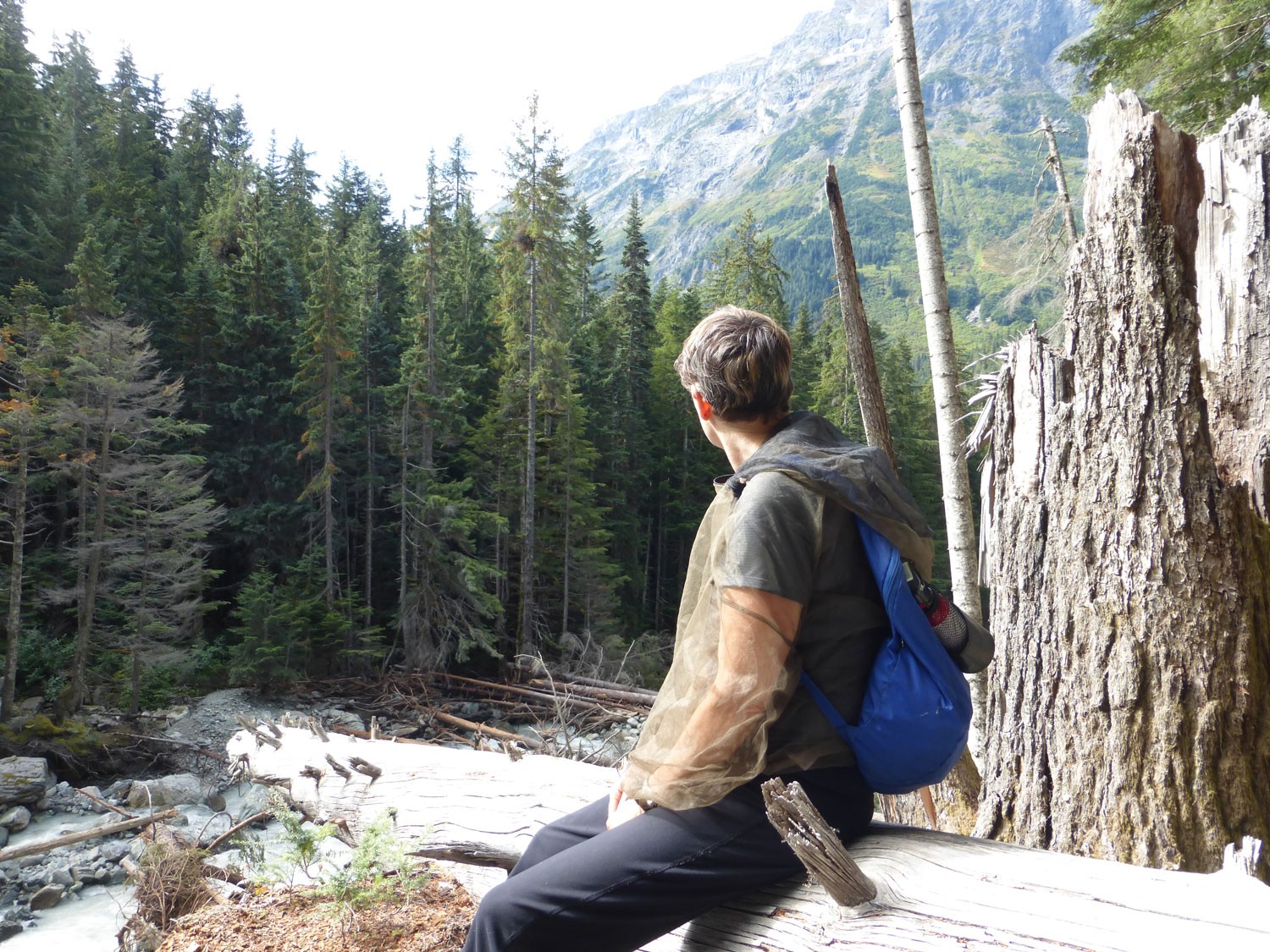
Resting from hiking in the mountains above Bella Coola.
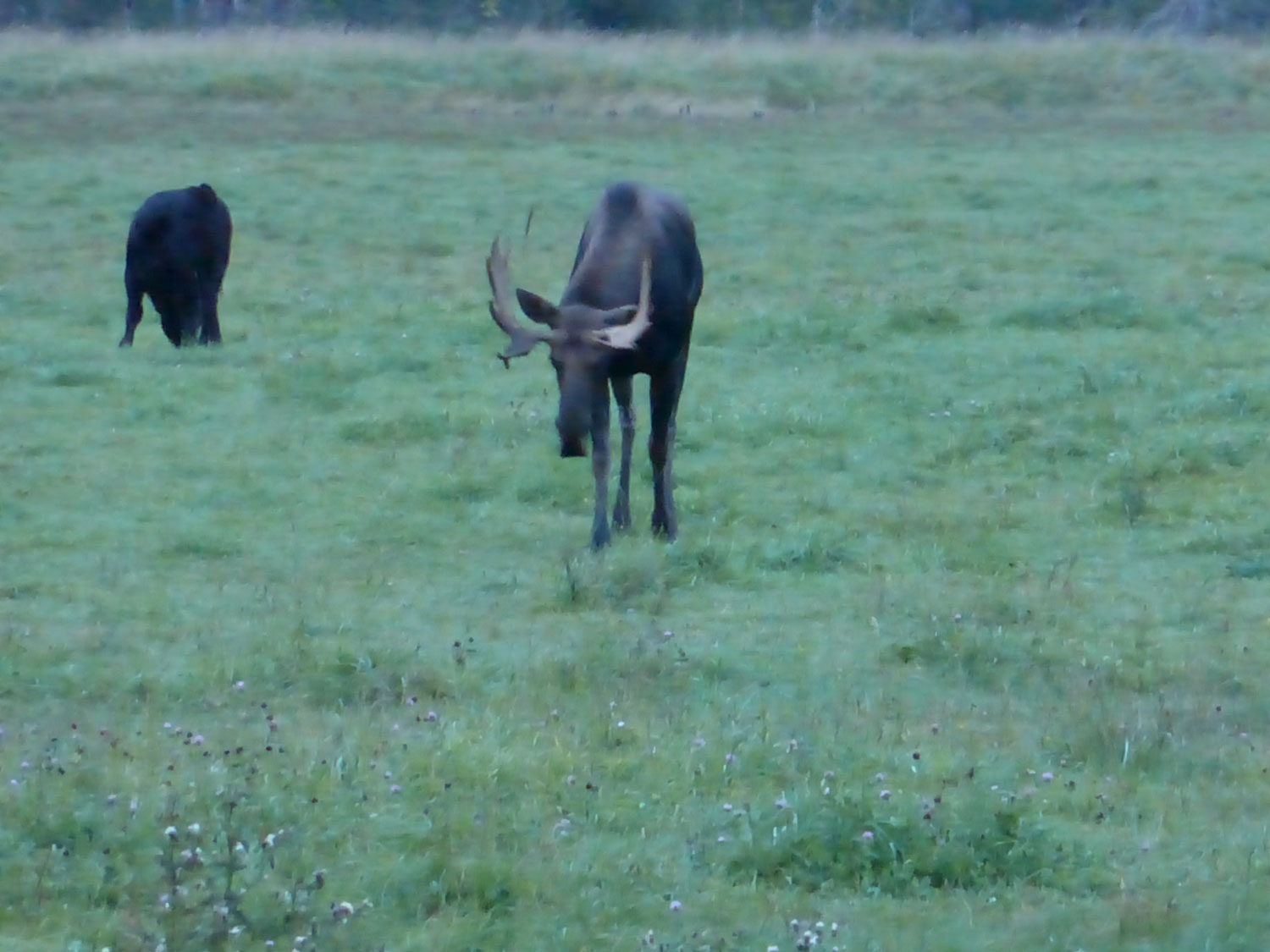
A moose guarding cows from cougars: Yes, this mention in my novel came from seeing it with my own eyes!
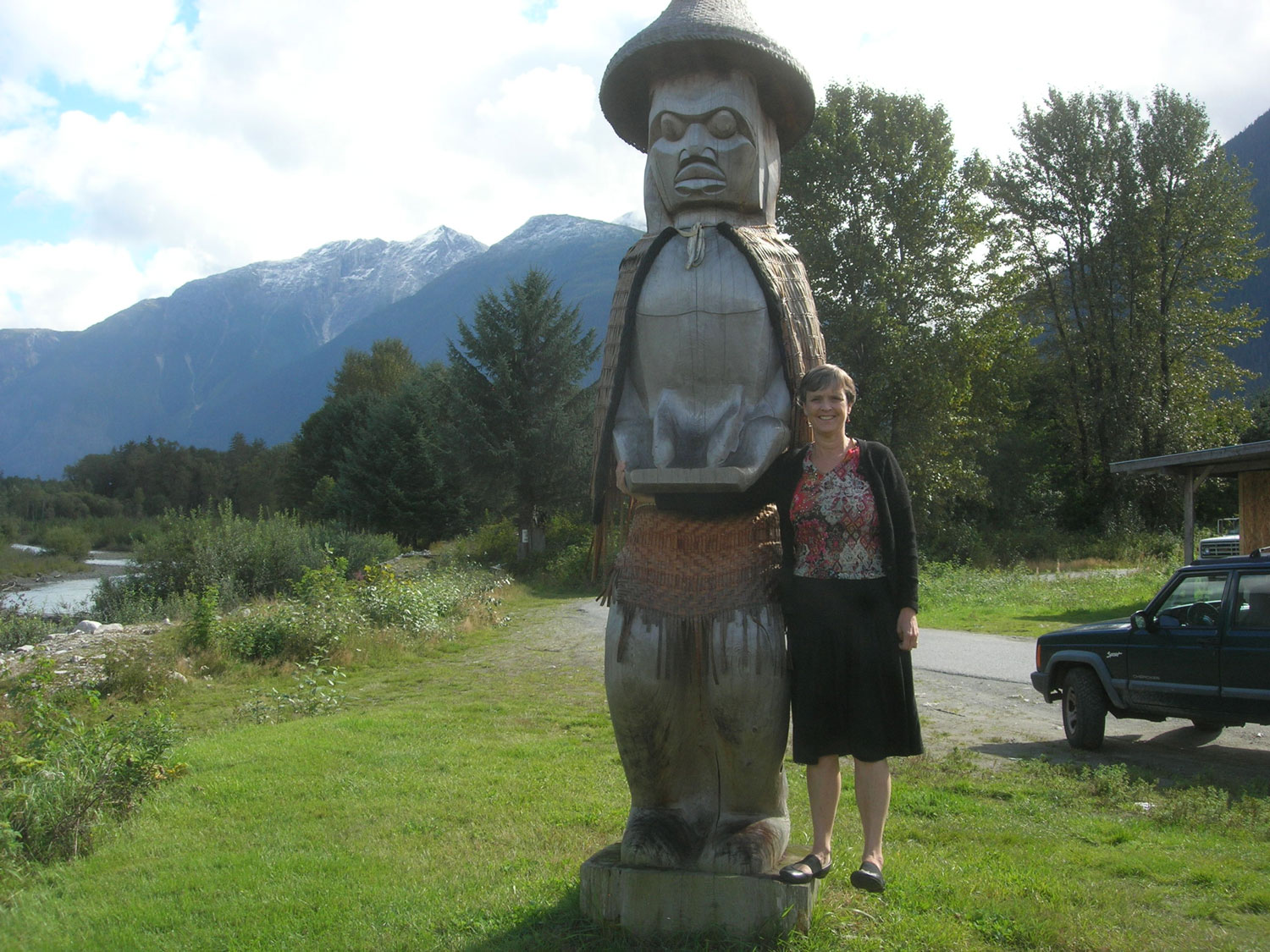
A carving in Bella Coola along the river.
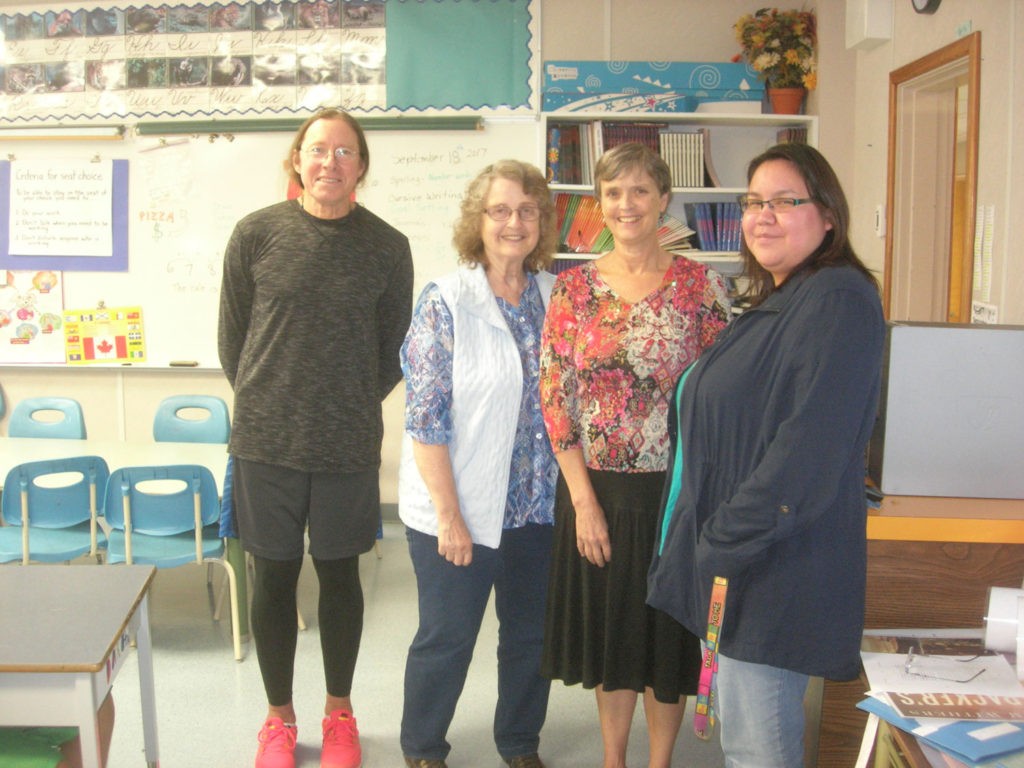
Teachers at Bella Coola Elementary, where I spoke while visiting the area for research for the novel. I also presented at Sir Alexander Mackenzie Secondary School.
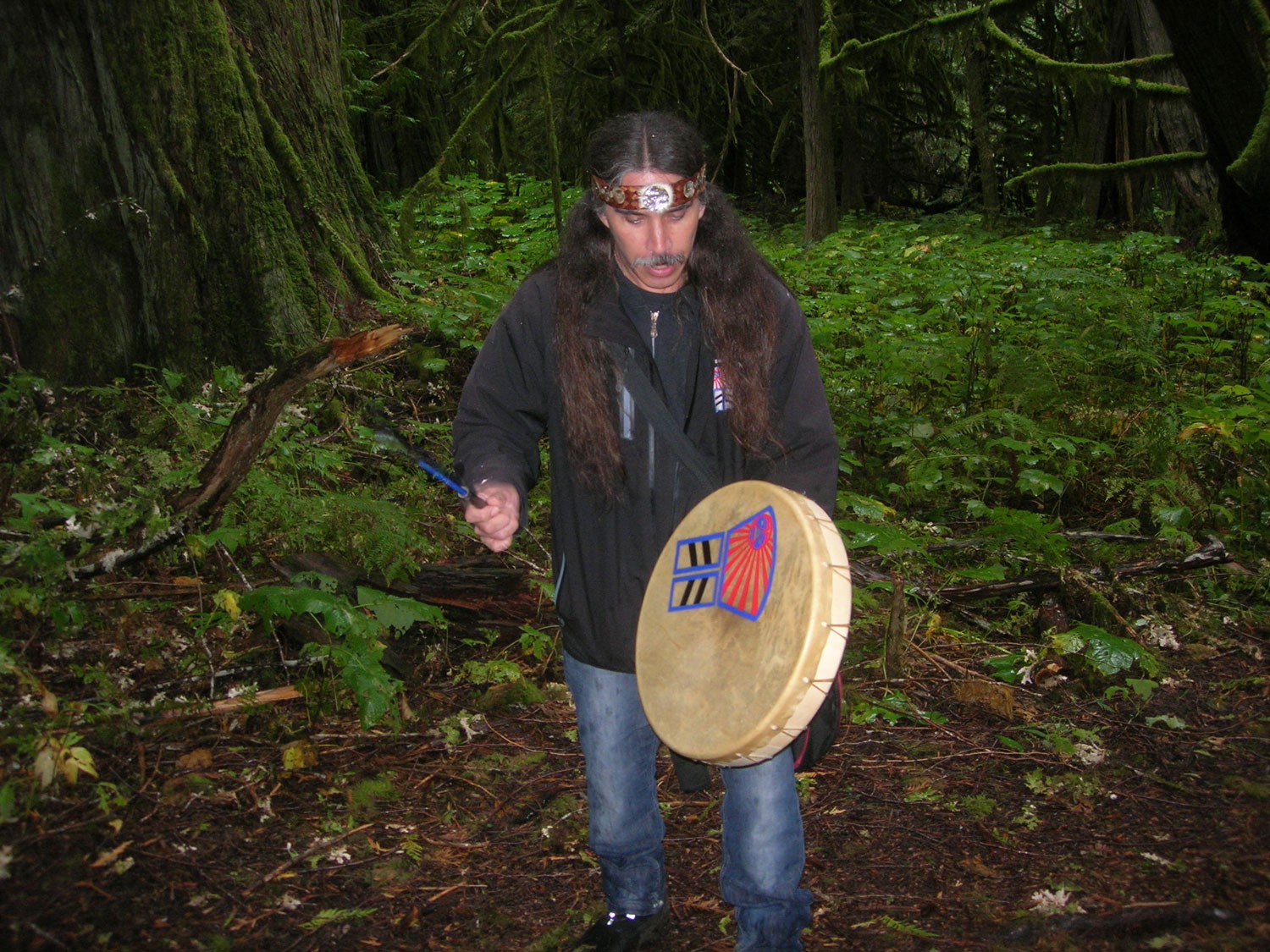
Our indigenous guide in Bella Coola, Clyde.
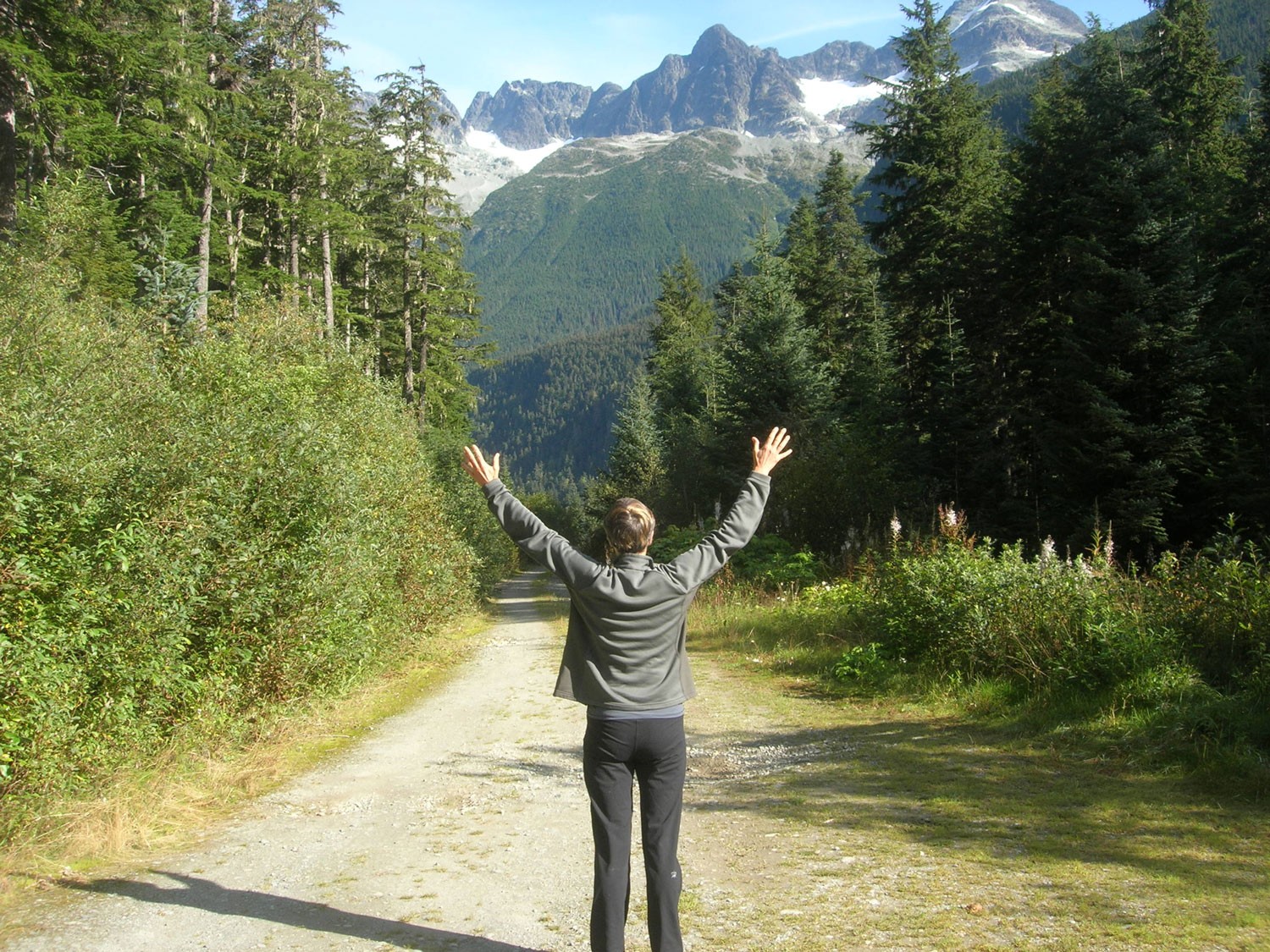
Celebrating the beauty of the Bella Coola region.
